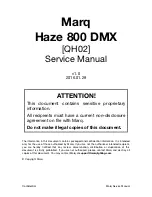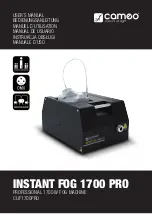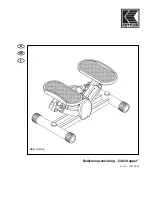
−
25
−
Adjustment Procedures
Results of Improper Adjustment
1) Adjust the height of main feed dog
2
to dimension A with
setscrew
5
.
2) Adjust the height of differential feed dog
3
with setscrew
7
so
that there is no difference in level between main feed dog
2
and differential feed dog
3
.
3) Adjust the height of auxiliary feed dog
4
with setscrew
6
so
that it is 0.5 mm lower than main feed dog
2
.
1) Use the tilt of the feed dog when it is in its highest position as a
reference and adjust so that the feed dog is flush with the throat
plate when the feed dog juts out the throat plate.
2) Feed bar shaft
8
consists of an eccentric shaft. Loosen
setscrew
9
to perform adjustment.
When the marker line is set at middle
.....The feed dog will be flat.
When the marker line is set at bottom
.....The feed dog will be tilted with its front up (in the arrowed
direction).
When the marker line is set at top
.....The feed dog will be tilted with its front down.
(Caution) The marker line should be used just as the reference
since it slightly differs with that of each machine due to
the disparity of the components.
Confirm the accurate tilt of the feed dog by observing the
feed dog itself.
™
If the feed dogs are too high, the
needles will be deflected and
broken when sewing heavy-
weight materials. The feed dogs
will tend to suffer scratches
w h e n s e w i n g l i g h t - w e i g h t
m a t e r i a l s . P u c k e r i n g w i l l
frequently occur.
™
If the feed dogs are too low,
insufficient feed power will
result.
™
If the auxiliary feed dog is too
high, chain-off thread will be
often jammed.
™
I f t h e m a i n f e e d d o g a n d
differential feed dog are set at
d i f f e r e n t h e i g h t s , p r o p e r
differential feeding action will be
hindered.
™
When tilted with the front up
Good material catching will be
obtained.
™
When tilted with the front down
Uneven feed and puckering will
be effectively prevented.
Summary of Contents for MO-6000S series
Page 78: ......
















































